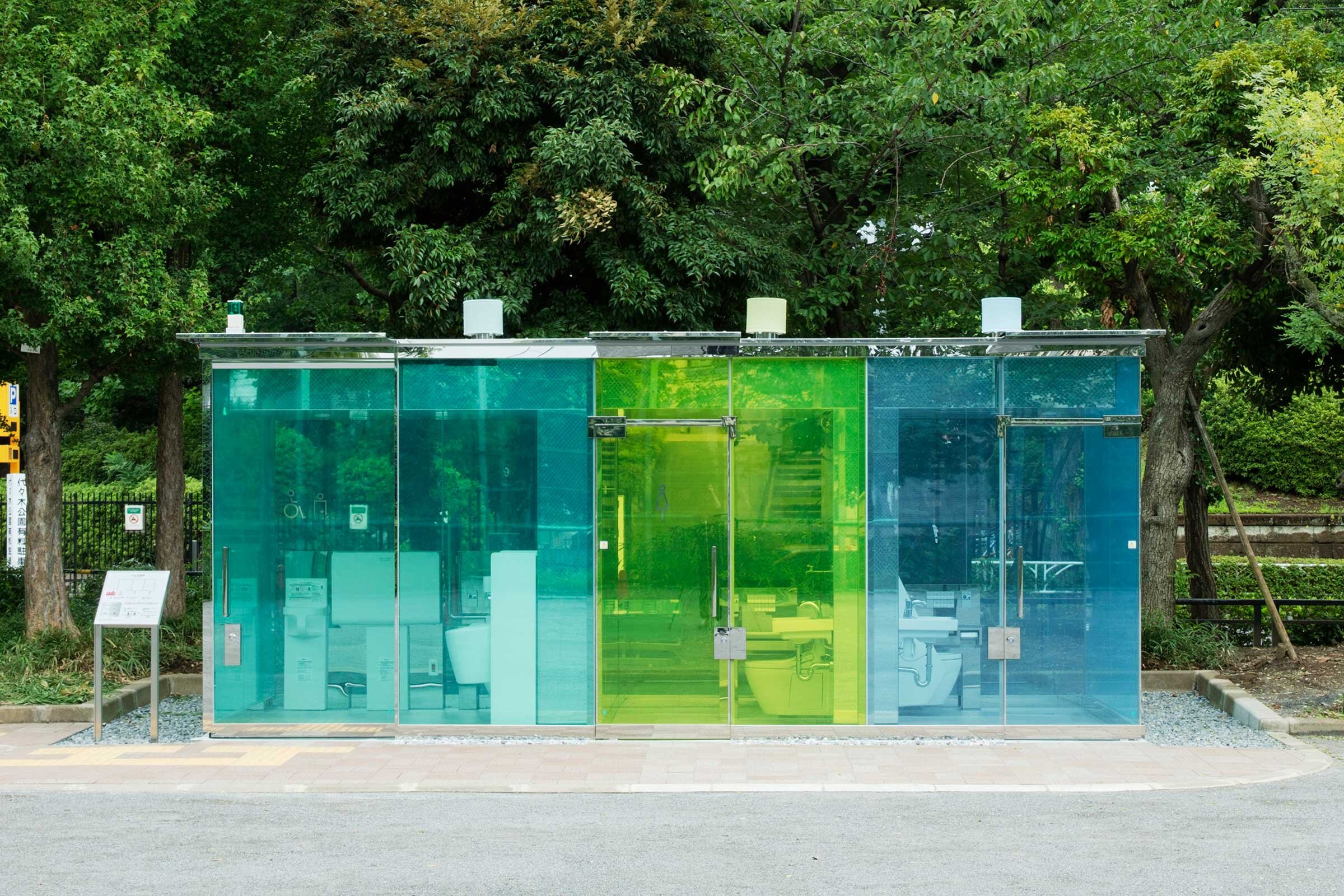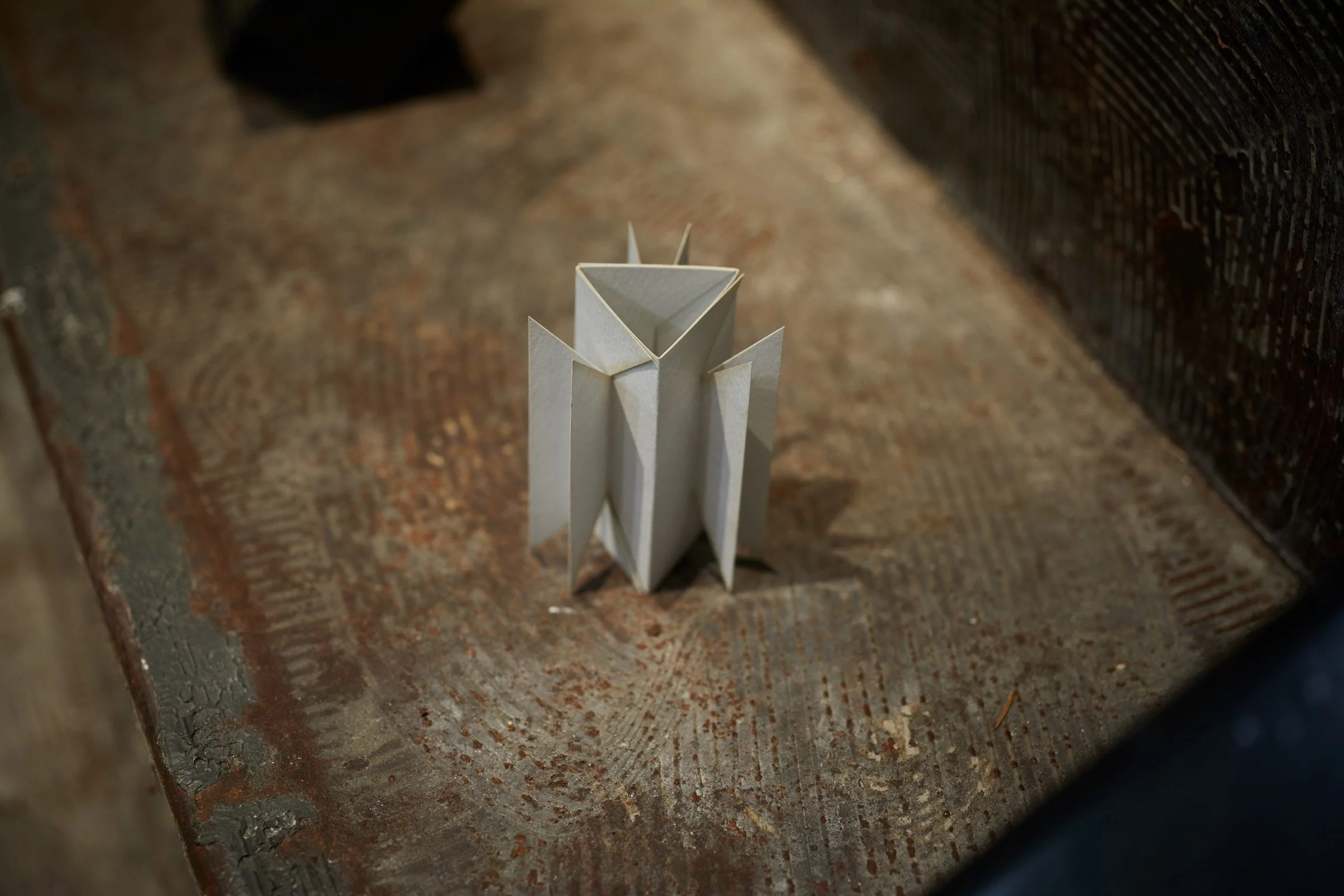Tokyo’s Toilets Get a Makeover

Leading architects and designers, including Tadao Ando, Kengo Kuma and Marc Newson, have joined the Tokyo Toilet Project to redesign 17 of Shibuya’s public toilet facilities, turning them into beautiful public/private spaces
Innovative, sculptural and thoughtful may not be words traditionally associated with public toilets, but in Tokyo, a Nippon Foundation initiative sees the humble public bathroom being transformed in an effort to highlight Japanese hospitality.
With high-profile designers on board, including Pritzker Prize-winning architects Tadao Ando, Shigeru Ban and Kengo Kuma, the goal of the Tokyo Toilet project, is to make the public facilities more welcoming, particularly in the lead up to the Olympics.
Shigeru Ban, who designed the Tomei toilets that quickly went viral for their use of ‘smart glass’ technology, says he created his designs around key user concerns: cleanliness and safety. ‘I thought transparent walls would help to assess the cleanliness and people won’t be able to hide inside,’ Ban says. But there were also aesthetic considerations. ‘I wanted the restrooms to be art objects that draw people’s attention. I coloured one of them in shades of red and the other in shades of blue, and at night they light up like lanterns.’
Shigeru Ban's toilets in Haru-No-Ogawa Community Park
Shigeru Ban's toilets in Haru-No-Ogawa Community Park
For her design, New York-based Japanese designer Nao Tamura drew inspiration from origata, the traditional Japanese method of gift wrapping. ‘One typically uses a single sheet of white paper that is precisely folded several times. This process symbolises the purity of an object and its having never been touched by human hands,’ Tamura explains, noting that using this ancient technique when giving a gift is one of the highest forms of honour and respect.
In order to replicate the folds, Tamura worked with steel plates to create the structure and facade. But rather than white, she was drawn to a bold red — a colour that, to her, represents safety and immediacy. ‘As a woman, I don’t believe that I’m the only one who feels some sense of fear or discomfort when entering an outdoor public bathroom, especially at night. This design represents my hope for a society where people from all walks of life feel safe and are able to thrive,’ she explains.
Only a few non-Japanese designers were invited to participate in the project, and industrial designer Marc Newson, whose toilet is tentatively set to open in 2021, says he was ‘honoured’ to learn he would be one of them. Newson, who previously lived in Tokyo, says he found the brief ‘intriguing’ and knew that it was very important for the space to be inviting and inclusive.
Given the global emphasis on hygiene as a result of the COVID-19 pandemic, The Nippon Foundation’s initiative has come to fruition at an interesting time. Newson suggests the current climate could influence design approaches in the future. ‘I think it will impact a lot, especially to do with how we approach design, as much as the designs themselves. Industries I’ve worked in for a long time, like air travel, may well have a revolution of sorts based on how to maximise safeness and hygiene. I think people, and therefore designs, will have to become more responsible and proactive,’ he says.
Text / Elizabeth Beattie
Images / Satoshi Nagare, courtesy of The Nippon Foundation
Masamichi Katayama’s Ebisu Park project
Masamichi Katayama’s Ebisu Park project
Masamichi Katayama’s Ebisu Park project
Fumihiko Maki’s toilets in Ebisu East Park
Fumihiko Maki’s toilets in Ebisu East Park
Part of Fumihiko Maki’s project in Ebisu East Park
Nao Tamura’s project in Higashi Sanchome
Nao Tamura’s project in Higashi Sanchome
Nao Tamura’s project in Higashi Sanchome
Nao Tamura’s project in Higashi Sanchome
Nao Tamura’s project in Higashi Sanchome
Tadao Ando’s Jingū-dōri Park public toilet
Tadao Ando’s Jingū-dōri Park public toilet
Takenosuke Sakakura’s Nishihara Itchome Park project
Takenosuke Sakakura’s Nishihara Itchome Park project
Shigeru Ban's Yoyogi Fukamachi Mini Park project
Shigeru Ban's Yoyogi Fukamachi Mini Park project
Takenosuke Sakakura’s Nishihara Itchome Park project

























